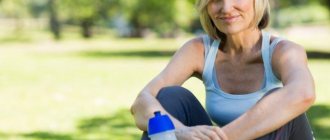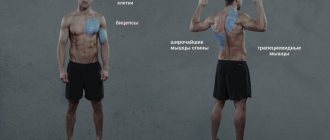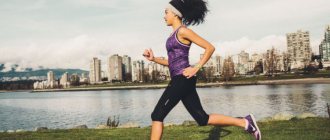Greetings! This article is about lengthening your legs naturally. This may be relevant for models for whom, due to their profession, it is important to have long legs. Also for people with closing growth plates, since the growth plates on the legs are the last to close. Many special exercises and techniques have already been invented to lengthen the legs. Here are 9 of the most famous ones.
In addition to the text version, watch the video with examples at the end of the article.
Kicking Jumping Interval running Inversion training Swimming Band stretching Weight stretching Riding with a raised saddle Stretching exercises
Bones grow under the influence of 2 types of exercises: “impact” and “stretching”. Do them together for better results. Let's start with the drums.
Impact training creates microdamage to the bones and irritates the growth plates on the legs. At the site of microdamage, new tissue is formed and the bones lengthen. And irritated growth zones also activate growth.
I included kicking, jumping and running as percussion. Next, we will briefly look at them individually.
Kicks
Suitable strikes include punching the punching bag, the opponent, or the air.
Two types of strikes work well: strikes with the instep of the foot and the base of the foot.
. Foot strikes are strikes with the portion of the leg from the ankle to the toes. In taekwondo, such a blow is called “dolyo chagi.” Heel kicks are horizontal or vertical kicks with the heel of the foot. Do both. Aim at different points: the head, torso or legs.
Beat for 10-15 minutes at a fast pace daily or every other day.
Causes of leg muscle lag
Incorrect technique: the most common reason for the lag of any muscle group, and we are talking not only about the technique itself in a vacuum, but also about the specifics of the technique in a high-intensity period, a high-volume period, how the athlete optimizes it for himself, etc. The technique of performing exercises during a high-intensity period should be explosive, general developmental, allowing you to achieve maximum performance in single repetitions. Roughly speaking, the technique should be “powerlifting”. They don’t perform exercises in such a way as to “feel the muscle” so that everything is beautiful, but instead they do everything to lift the weight as much as possible. This is what a bodybuilder should do during high-intensity regimens.
During high-volume circuits, where exercises are performed for 12-15 repetitions, often without failure , ” technique should be used. Of course, in leg exercises, in general, it is difficult “ cheat ” , somehow help yourself with “assistants”, etc., but the exercises can be performed at different paces, with larger and smaller jerking movements and so on. Therefore, the technique of performing exercises must correspond to the goal. If the goal is to increase working weights, achieve “failure,” etc., then the athlete must perform the exercises in such a way as to realize this as effectively as possible. If the goal is pumping, then you need to perform the exercises smoothly, under control, “feeling” the work of the target muscle group. But special attention should be paid to developing the technique of doing squats .
Wrong set of exercises: firstly, we are talking about preferring isolation exercises to basic ones, and, secondly, about ignoring one or another muscle group. The most effective leg exercises are: barbell squats, leg presses Romanian classic front sumo deadlifts exercise . During high-intensity circuits, be sure to perform barbell squats, deadlifts, and Romanian deadlifts. If your calf muscles are genetically poorly defined, it is also recommended to perform the “donkey” exercise. During “pumping” you can add various bending, extension, lunges, etc.
Incorrect training scheme: many people train without cycles, constantly performing the same amount of work, with the same intensity and intensity. The experience of Soviet weightlifters demonstrated that this is an ineffective way of training. Methodists such as Verkhoshansky, Roman, Plekhov and others have clearly proven that the training plan should consist of cycles. in detail about how to draw up a training plan , so those who are interested in this issue conceptually can read the article at the link. As for the practice of constructing a training scheme for specialization on the legs, it looks like this: 4 months Ukrainian school , a month of three tens, as recommended in the scheme, and then 2 months of pumping according to a high-volume scheme for the legs . Believe me, your feet will not remain indifferent!
Jumping
Next in line are the jumps. They also make the legs grow by creating microcracks and irritating the growth zones. I offer 3 options for jumping.
Jump rope
One of the most affordable growth trainers.
Jump rope for 5-10 minutes at an intense pace every day or every other day.
Plyometrics
In addition to jump rope, consider plyometrics, which are specialized jumping workouts. Jumping jacks or high jumps are the right choices. This is more difficult than jumping rope, but the effect is also greater. Try to devote some time to plyometrics.
Trampoline
The third way to jump is to buy yourself a home trampoline or go to trampoline clubs. Unlike the first two methods, you can jump on a trampoline for hours. It's easy and very attractive for children. There will also be an effect on growth if you jump for 20–30 minutes every day or every other day.
conclusions
These are the main points that need to be taken into account in order for training lagging muscles to be effective.
Over time, only you can create the best scheme for yourself, because... it depends specifically on YOUR MUSCLE, on the size of its lag, on your genetics, fitness, gender and age, as well as the recovery capabilities of your body.
Learn to analyze, friends. This is very important not only for creating a competent training program for yourself in the gym, but also for more important things concerning our lives.
PS Subscribe to blog updates. It will only get worse.
With respect and best wishes, Nikita Volkov!
The leg muscles are the largest muscle mass in the human body, and therefore more attention should be paid to the legs than any other muscle group. Why? Firstly, because the lag of the leg muscles from other muscle masses leads to an imbalance that is simply not aesthetic, and secondly, because the development of the legs limits the growth of other muscles. How? The fact is that the ratio and shape of muscles are determined genetically, and although the ratio of the sizes of muscle groups can still be slightly adjusted, their shape cannot be changed. In this regard, if the muscles of the upper body begin to violate this percentage ratio of sizes, then the body will try to compensate for it by slowing down the growth of the muscles of the upper body and redirecting resources to the growth of the leg muscles.
Why is this so? Because the muscles are intended, first of all, to move the skeleton in space, and therefore they are laid there so that it is convenient for a person to run, jump and do other obscenities. And if you violate this proportion, preventing the performance of functional tasks, then the body resists this. Alas, the body is not designed to show off in front of the mirror, win championships or pick up girls on the beach, it is designed to survive in harsh conditions, run away from predators, kill the weak and collect edible plants. In women, by the way, this is also true, but since girls have more muscle cells in the lower part of the body, they can, more or less, pump up their buttocks , although, at the same time, the specifics of the training should be taken into account depending But in this case we are talking about how to build a training plan for a man if his goal is to specialize in the legs.
Interval running
Closes the list of running activities. In principle, walking is also suitable, but during running the load on the bones is several times greater. For our purpose, running is preferable. The greater the load, the more irritated the bones.
Interval running or running with acceleration has proven itself to be excellent. The idea is to alternate moderate running with sprints.
. For example, run for 20 seconds at an easy pace and 10 seconds at a fast pace. Alternate and continue for 5-10 minutes. Exercise a couple of times a week.
We are done with impact exercises and move on to stretching exercises. Stretching ones will enhance the percussion effect. In other words, if the leg bones are first damaged and then stretched, expect a synergistic effect.
I included inversions, stretching with bands and weights, as well as cycling with a raised saddle, swimming pool, and stretching exercises. Let's go in order.
Don't neglect basic exercises
At first glance, it seems that the legs are very simple in their structure: the front surface of the thigh (quadriceps), the back surface of the thigh (biceps), buttocks and calf muscles. In reality, these are dozens of muscles, including not only pushers and pullers, but also stabilizers.
If you try to make it easier on yourself and train the largest muscle group in the body with simple isolation exercises like leg extensions or leg curls, you won't work even a third of them. Additionally, there will be no famous anabolic response that jumpstarts the development of the entire body.
The higher the stress, the greater the hormonal response. The more muscles involved in work at the same time, the higher the stress will be.
During the mentioned leg extensions in the simulator, you load only the quadriceps, and then only partially. During squats with a barbell on the shoulders, the quadriceps, buttocks, sartorius muscles, inner thigh, hamstring, plus core muscles (abs, obliques, extensors) are significantly loaded.
Even the platform press does not load the legs as much as squats with weights, although this exercise can also be classified as basic. Or, at a minimum, to the basic movements for building powerful lower limbs.
Do not forget about the technique of performing the exercise - the squat must be done as deep as possible (as far as flexibility allows), and the knees should not go beyond the line of the toes. Otherwise, there will be excessive stress on the knee joint, which will lead to premature wear.
By the way, the practice of placing thin pancakes under your heels “pushes” your knees forward very much - don’t do this. If you fall back, work on your flexibility, place your feet a little wider, spread your toes 45°, move your pelvis back more, lean forward a little more, and so on. Choose the movement for yourself, and it is advisable to do this under the supervision of an experienced trainer. There are no identical squats, because each of us has different levers, that is, the length of the thigh and lower leg, and the places where the muscles are attached differ.
Squat to at least parallel to the floor (90° angle between thigh and shin) to engage the hamstrings, glutes, and stabilize the knee joint. One of the best articles on squat technique is here.
In addition, the fundamental movements for developing legs include the Romanian deadlift :
And deadlift , be it classic or sumo:
Hack squats work the leg muscles well, but I don’t recommend using them until you learn how to squat normally with a barbell. The same applies to working in a Smith machine, in which it is very easy for a beginner to get injured. I talked more about dangerous strength exercises in a feature article.
Swimming
The force of gravity, which constantly attracts the earth on land, is reduced in water. This makes it easier for the body to grow. In addition, in the water you will have to stretch more often, including pulling your legs, to stay afloat and not drown.
To increase height, 2 types of swimming are more effective: crawl and back crawl.
. However, they require a lot of strength, so you won’t be able to swim for a long time. At least at first. In between crawl approaches, use breaststroke or something else. For example, change 20 seconds of freestyle crawl to 40 seconds of breaststroke and vice versa.
Frequency: at least 3 times a week for 30-60 minutes.
Stretching with weights
A fourth leg stretching technique—an old and well-respected one—is sitting with weights. The mechanism of operation is similar to tourniquets, that is, the legs are constantly stretched and become longer over time.
To sit with weights, you need a high chair or table so that your feet do not touch the floor. Weights here range from 1 kg and more. Put on weights, sit down and sit for 30-60 minutes every day.
Try alternating this technique with tourniquets: for example, stretch with tourniquets one day, and weights the other day.
Stretching exercises
Stretching exercises are needed more to stretch the muscles, not the bones. Which is also important, since relaxed and stretched muscles allow bones to grow unhindered.
As an example, I will give splits and yoga asanas.
for legs. Hold each exercise for 30–60 seconds. You can sit on the splits for longer. It is advisable to repeat it daily or several times a week.
Watch video on YouTube
That's all the leg lengthening exercises for today. In conclusion, I will say 2 things.
1. Consult your doctors. The mentioned exercises are not always allowed to be performed in case of health problems.
2. Create an individual schedule for yourself. As you noticed, I always advised exercising every day or every other day. But this does not mean that everything needs to be done at once. Vary your exercises. Gradually increase the load. Rest when necessary.
Thank you for your attention. I wish you success!
Best regards, Vadim Dmitriev











